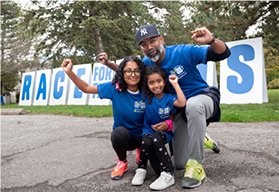Unique
partnership

Sunnybrook Canadian Simulation Centre and the First Nations and Inuit Health Branch collaborated to design and deliver immersive simulation-based education for COVID-19
When the first cases of COVID-19 began to appear in the First Nations and Inuit communities of Northern Ontario, planning was underway to answer the question: “How will we manage?”
A nursing practice consultant with the First Nations and Inuit Health Branch (FNIHB), Craig O’Brien oversees the nursing stations in many of the First Nations and Inuit communities across the province. In the 40 stations supported by the FNIHB, there are no hospitals, the doctor visits just once a month and it can take hours or even days to safely transport critically ill patients to hospital.
“We wanted to know what to do in a worst-case scenario – if we had a patient struggling to breathe and no ability to intubate them,” Craig says.
The answer came in the form of new equipment – oxygen concentrators, nasal prongs and masks – and an innovative educational partnership with Sunnybrook.
Immersive simulation-based education
“The clinic’s nurses complete busy two-week rotations with little time to attend education sessions instructing them on the use of their new equipment,” explains Agnes Ryzynski, Director of the Sunnybrook Canadian Simulation Centre (SCSC).
Founded in 1995 as a Canadian first, the SCSC educates more than 3,000 students, health professionals and researchers per year in patient care situations.
“It prompted us to think how we might use technology to deliver online, flexible and immersive educational experiences focused on managing COVID-19 patients in respiratory distress,” says Agnes.
The SCSC team, (including Agnes Ryzynski, Medical and Research Director Dr. Fahad Alam, Simulation Educator Susan DeSousa, Simulation Specialist Victoria May, Simulation Project Lead Tarsila Da Cruz and VR Developer Kyle Wilcocks) and Sunnybrook Respiratory Therapist Julie Nardi collaborated with the FNIHB to design and deliver the innovative program at 21 remote stations in Ontario.
Clinic staff use their smartphones outfitted with a cardboard virtual reality lens to view the four 3D instructional videos. They can access the tools 24/7 using a QR code embedded into each piece of equipment. The project was funded by donors who have supported Sunnybrook’s COVID-19 response and education.
The videos have been viewed more than 350 times to date.
“The feedback I received from the nurses was that the educational videos were helpful at explaining the oxygen pathway and easily accessible using their phones or devices when they were able to watch,” says Craig.
Developing new protocols
In addition to making health-care education accessible, the videos inspired the FNIHB team to develop a new protocol for safely storing and using oxygen therapy in a remote environment.
“In a crisis, there’s no time to pull out a manual. Sunnybrook’s expertise was invaluable in helping front-line nurses in remote northern Ontario First Nations communities provide the safest, most up-to-date care to their patients,” says Craig. “We’re very grateful.”










